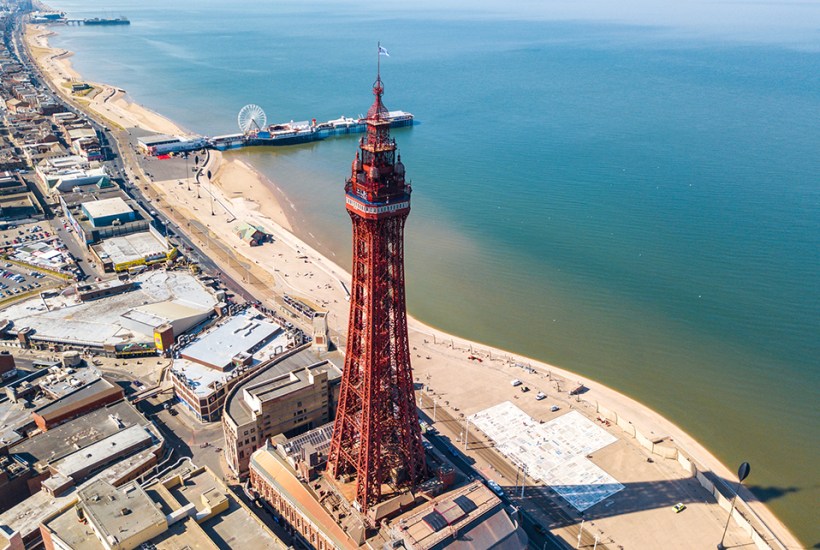Huge excitement last week, as archaeologists announced the discovery in Southwark of the best preserved Roman mausoleum ever found in Britain. I heard the news on the radio while driving with a friend, and both of us – living as we do south of the river – cheered. Shortly afterwards, I was invited on to the World Service to talk about Roman London. No sooner had the presenter introduced me than he was demanding to know about the mausoleum. I felt a lurch of horror. I realised I knew nothing, absolutely nothing about the mausoleum beyond what I had heard on the radio. ‘What did it look like?’ the presenter pressed. What to say? That it was big? Small? Mausoleum-y? In the event, I decided that honesty was the best policy. I put my hands up. I confessed my ignorance. It is almost always the cover-up, after all, rather than the event that causes trouble.
The Romans are much on my mind. Early next month sees the publication of my new book about the heyday of the Roman peace: the age of the building of the Colosseum and Hadrian’s Wall, and the destruction of Jerusalem and Pompeii. It is the third in a series of histories of the Roman Empire, the first of which – Rubicon, about the age of Julius Caesar – I wrote more than 20 years ago, during the first presidency of George W. Bush and the aftermath of 9/11. Back then it was the parallels between the two imperial republics, the Roman and the American, that most struck me. Chapter headings in Rubicon included ‘The War on Terror’ and ‘Known Unknowns’. Now, however, when I look at the Roman Empire, I see, not a distant mirror, but a world incalculably stranger and more alien than I had properly comprehended two decades ago. Everything that looks familiar to us about the age of Hadrian – the teeming cities, the globalised trade, the tensions over identity – serves only to emphasise everything about it that is strange. The Romans are fascinating, less for the reflections of ourselves that we can sometimes glimpse in their world, than for the opposite: the sense they give us of just how infinite are the forms that civilisation can take.
My excuse for not having read up on the mausoleum found in Southwark is that I spent the whole of last week on holiday. I had booked it a year ago, as a birthday present to my friend, Jamie Muir. It was a somewhat eccentric road-trip. We took two places I had never visited but always wanted to – Sutton Hoo and Blackpool – and drew a line between them on a map. We then had to identify places of interest along this line to visit. The resulting randomness was entirely the point. England, rather in the manner of the Tardis, stood revealed as a country that was only pretending to be small. Over the course of our trip we saw canals and caves, forests and fells. We made pilgrimages to a stone circle on a Derbyshire peak and to the brutalist masterpiece that is Bolton bus station. We walked in the footsteps of the US airmen who, in late December 1980, investigated a series of strange occurrences that have aptly been described as Britain’s Roswell. We breakfasted in Grantham in a room where Richard III had stayed. We admired the Southwold leaves. The road trip only took us four days, but by the end of it I was left with a renewed sense of how lucky I am to live in a country so beautiful and incomparably rich in fascination.
The highlight of the trip, perhaps, was the very last stop of all. Blackpool has not been enjoying a great press recently. Only a couple of days before we arrived in the resort there had been a major sewage leak into its waters. Yet I was blown away by what I found there. It helped, no doubt, that the weather was perfect, and that the sun, sinking slowly into the Irish Sea, gave to its twilight something of the incandescence of a Turner sunset. But even in drizzle I would have loved it. Towns with a sense of history rarely come so unpretentious. At the Imperial Hotel, images of all the prime ministers and presidents who have stayed there are interspersed with those of Errol Flynn, Jayne Mansfield and the Beatles. At the Pleasure Beach, the oldest ride – Sir Hiram Maxim’s Captive Flying Machines – was designed by a man who was born in 1840. Blackpool’s Ghost Train – the world’s oldest – is haunted by a long dead ride operator known as Cloggy, due to the sinister clacking of his clogs. The vague air of seediness only adds to the appeal. Viva the Lancastrian Riviera! Viva Blackpool!
Got something to add? Join the discussion and comment below.
Get 10 issues for just $10
Subscribe to The Spectator Australia today for the next 10 magazine issues, plus full online access, for just $10.
You might disagree with half of it, but you’ll enjoy reading all of it. Try your first month for free, then just $2 a week for the remainder of your first year.








Comments
Don't miss out
Join the conversation with other Spectator Australia readers. Subscribe to leave a comment.
SUBSCRIBEAlready a subscriber? Log in